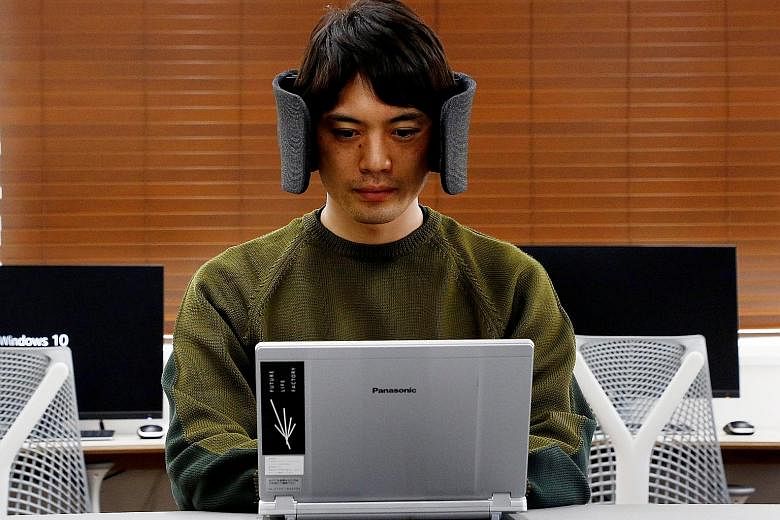TOKYO • Mr Akihiro Adachi, a 31-year-old audiovisual equipment designer at Panasonic, longed for some personal space during his lengthy train rides from Osaka to Tokyo. So when his company set out to encourage innovation, he and his colleagues came up with "Wear Space", a headset that limits noise and peripheral vision.
The prototype unexpectedly won a global design award and received positive feedback from unexpected quarters, such as sake tasters who wanted to limit sensory input.
The project is among a range of efforts in the Japanese electronics industry to reinvigorate industrial design. After years of losing ground to design-first rivals such as Apple and Dyson, Japanese firms are now trying to recover the processes and creative flair that produced iconic products such as the Walkman.
Panasonic, Sony and Mitsubishi Electric are among those implementing practices that have been routine at many US and European firms, such as engaging designers at every step and treating packaging as part of the product.
"We used to have designers involved only in final stages of our product development process, just for an aesthetic fix," said Mr Yoshiyuki Miyabe, Panasonic's technology and manufacturing chief. "We are revamping the process so that designers can join us from the planning phase."
The Japanese government is promoting the efforts: A report in May urged corporate executives to pursue "design-driven management, whereby a company leverages design as a primary driver of competitiveness". It also called for tax incentives for design-related investments and new laws to better protect intellectual property. The government is set to revise such laws next year.
Dr Kinya Tagawa, a visiting professor at the Royal College of Art and co-founder of design firm Takram, said there has been a sharp increase in major companies requesting design lectures for their executives.
However, there is a long way to go. C-suite designers remain a rarity at most electronics firms while technologists reign supreme, company officials and industrial designers said.

Japan last year received 31,961 applications for design registrations, only a fraction of China's 628,658 and half of South Korea's 67,374. In the heyday of the Japanese electronics industry, in the early 1980s, there were nearly 60,000 applications every year.
Dr Tagawa said the root of today's problems was the failure of Japanese firms to absorb lessons from the software revolution, which showed the importance of user-centred design principles and easy-to-use products such as Apple's iPhone. Instead, they remained fixated on engineering.
Mr Ryuichi Oya, design chief at Sharp, said he saw that attitude up close when he moved to Sharp four years ago after a long stint at carmaker Mazda Motor.
"Designers at home electronics companies have little say compared to engineers," he said. "When engineers dismiss design proposals as too costly or difficult from an engineering point of view, designers easily succumb."
Mr Oya said he found it particularly hard to convince management of the need for a design vision. "It's not about whether you like this colour or that shape. There have to be design principles unique to Sharp and consistent across its product line," he noted.
Japanese designers cited the contrast with South Korea's Samsung Group, where its patriarch Lee Kun-hee said in 1996 that design was a core management resource "imperative for a company's survival in the 21st century". He sharply boosted both the number and status of designers.
At Sony, insiders said design began its return to the forefront after chairman Kaz Hirai took over in 2012. Change has been slow as the firm restructured, but the results can be seen in its approach to the revival of Aibo, a robot dog. Designers worked to craft a holistic user experience, starting from the moment a customer opened the box, tapping into a community of Aibo owners, said Sony design chief Yutaka Hasegawa.
REUTERS

